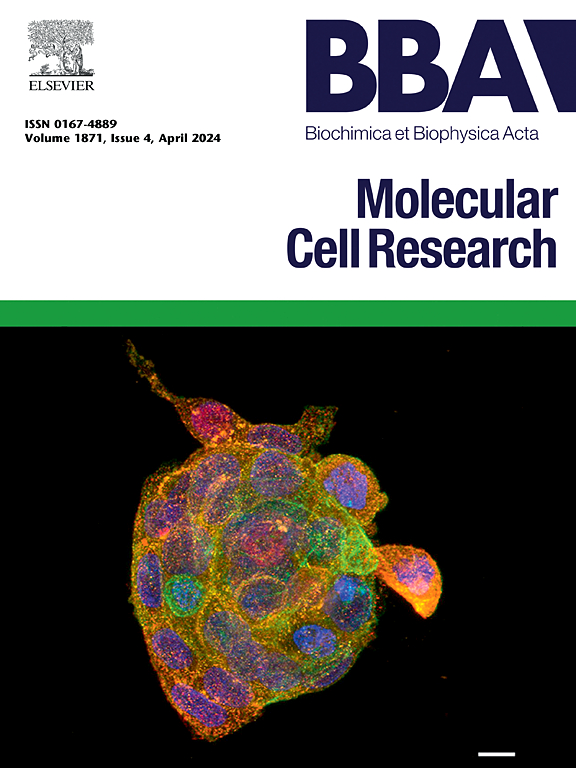多形性胶质母细胞瘤(GBM)中的离子通道表达和功能:病理生理机制和治疗潜力
IF 3.7
2区 生物学
Q1 BIOCHEMISTRY & MOLECULAR BIOLOGY
Biochimica et biophysica acta. Molecular cell research
Pub Date : 2025-05-05
DOI:10.1016/j.bbamcr.2025.119982
引用次数: 0
摘要
多形性胶质母细胞瘤(GBM)是一种由胶质细胞和神经干细胞引起的高度恶性和弥漫性侵袭的WHO IV级脑肿瘤。GBM的特点是快速增殖和迁移,侵袭局部脑实质,缺氧微环境,抗凋亡和高血管重塑和血管生成。这些特征导致肿瘤在治疗或切除后几乎普遍复发,患者预后差。离子通道是一种蛋白质超家族,负责允许离子通过不正常的膜,在GBM中显示出广泛的重塑,其异常功能与这些特征的操纵机制相关。在这篇综述中,我们将讨论已知的离子通道表达和活性之间的联系,以及在GBM形成或进展过程中被增强或干扰的细胞过程。我们还将讨论GBM样品或细胞系中离子通道的基础或转化研究结果在多大程度上显示出对改进治疗GBM的临床前希望。本文章由计算机程序翻译,如有差异,请以英文原文为准。
Ion channel expression and function in glioblastoma multiforme (GBM): pathophysiological mechanisms and therapeutic potential
Glioblastoma Multiforme (GBM) is a highly malignant and diffusely invasive WHO Grade IV brain tumor arising from glial and neural stem cells. GBM is characterized by rapid proliferation and migration, aggressive invasion of local brain parenchyma, a hypoxic microenvironment, resistance to apoptosis and high vascular remodeling and angiogenesis. These hallmarks contribute to a near universal tumor recurrence after treatment or resection and poor patient prognosis. Ion channels, a superfamily of proteins responsible for permitting ion flux across otherwise impermeant membranes, show extensive remodeling in GBM with aberrant function mechanistically linked to manipulation of each of these hallmarks. In this review, we will discuss the known links between ion channel expression and activity and cellular processes that are enhanced or perturbed during GBM formation or progression. We will also discuss the extent to which basic or translational findings on ion channels in GBM samples or cell lines have shown preclinical promise towards the development of improved therapeutics against GBMs.
求助全文
通过发布文献求助,成功后即可免费获取论文全文。
去求助
来源期刊
CiteScore
10.00
自引率
2.00%
发文量
151
审稿时长
44 days
期刊介绍:
BBA Molecular Cell Research focuses on understanding the mechanisms of cellular processes at the molecular level. These include aspects of cellular signaling, signal transduction, cell cycle, apoptosis, intracellular trafficking, secretory and endocytic pathways, biogenesis of cell organelles, cytoskeletal structures, cellular interactions, cell/tissue differentiation and cellular enzymology. Also included are studies at the interface between Cell Biology and Biophysics which apply for example novel imaging methods for characterizing cellular processes.

 求助内容:
求助内容: 应助结果提醒方式:
应助结果提醒方式:


